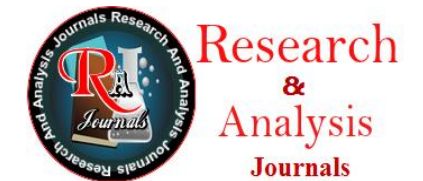Connexion between Saving, Investment and Economic Growth of India
September 30, 2020
This paper scrutinizes the relationship between gross domestic saving, gross capital formation and economic growth in India during a period from 1992 to 2018. The results of cointegration analysis reveal that there is a long-run relationship between selected variables; however, the observations from the results of Granger causality test indicate positive relation between saving, investment and economic growth in India. The findings explicate that saving and investment directed growth is coming from the private sector.
Saxena, S. P., & Fouzdar, A. S. (2020). Connexion between Saving, Investment and Economic Growth of India. International Journal Of Management And Economics Invention, 6(09). Retrieved from http://rajournals.in/index.php/ijmei/article/view/598
1. Agrawal, P. (2001). “The relation between Savings and Growth: Cointegration and Causality Evidence from Asia”. Applied Economics, 33, 499-513.
2. Carroll, C. and Weil, D. (1994). ‘‘Saving and Growth: A Reinterpretation’’, Carnegie-Rochester Conference Series on Public Policy, Vol. 40, June, 133-192.
3. Dickey, D.A. and Fuller, W.A. (1979). ‘‘Distribution of the Estimators for Autoregressive Time Series with a Unit Root’’. Journal of the American Statistical Association, Vol. 74, 427-431.
4. Dickey, D. A. and Fuller, W. A. (1981). ‘‘Likelihood Ratio Statistics for Autoregressive Time Series with Unit Root’’, Econometrica, Vol. 89, No. 4, 1052- 1072.
5. Granger, C. (1969). ‘‘Investigating Causal Relations by Economic Models and Cross-Spectral Methods’, Econometrica, Vol. 37, No. 3, 424-438.
6. Granger, C. (1980). ‘‘Causality, Cointegration, and Control’’, Journal of Economic Dynamics and Control, Vol. 12, 511-559.
7. Hundie K. S. (2016). “Saving Investment and Economic growth in Ethiopia: Evidence from Bouds Testing Cointegration and TYDL Granger Causality Test”. Lambert Academic Publishing.
8. Jangili, R. (2011). “Causal Relationship between Saving, Investment and Economic Growth for India”. Reserve Bank of India, Occasional Papers, Vol. 32, No. 1.
9. Jappelli, T. and Pagano, M. (1994). ‘‘Saving, Growth and Liquidity Constraints’’, The Quarterly Journal of Economics, Vol. 109, No. 1 (Feb), 83-109.
10. Johansen, S. (1988). ‘‘Statistical Analysis of Cointegrating Vectors”, Journal of Economic Dynamics and Control, Vol. 12, No.2-3, 231-254.
11. Johansen, S. and Juselius, K. (1990), “Maximum likelihood Estimation and Inference on co-integration - with Applications to the Demand for Money”, Oxford Bulletin of Economics and Statistics, Vol. 52, 169-210.
12. Lewis, W. A. (1955). ‘‘The Theory of Economic Growth’’, Homewood, III: Irwin.
13. Muhleisen, M. (1997). ‘‘Improving India’s Saving Performance’’, IMF, Working Paper WP 97/4, International Monetary Fund, Washington, D.C.
14. Seth B. (2011), “Long Run and Short Run Saving-Investment Relationship in India”. Reserve Bank of India, Working Paper Series 13/2011.
15. Sinha, D. (1996). ‘‘Saving and economic growth in India’. Journal of Economia Internazionale, Vol. 49, No. 4, 637–647.
16. Sinha, D. and Sinha, T. (2008). ‘‘Relationships among Household saving, Public saving, Corporate saving and Economic growth’’, Journal of International Development, Vol. 20, No. 2, 181-186.
17. Solow, R. M. (1956). ‘‘A Contribution to the Theory of Economic Growth’’, Quarterly Journal of Economics, Vol. 70, No. 1 (Feb), 65-94.
18. Toda, H.Y. and Phillips, P.C.B. (1994). ‘‘Vector Autoregressions and Causality: A Theoretical Overview and Simulation Study’’, Journal of Econometric Reviews, Vol. 13, 259-285.
19. Verma, R. (2007). ‘‘Savings, investment and Growth in India’’, South Asia Economic Journal, Vol. 8, No. 1, 87-98.
20. Yadav S. I., Goyari P. and Mishra R. K. (2018). Saving, Investment and Growth in India: Evidence from Cointegration and Causality Tests. Economic Alternatives Journal, 2018, Issue 1, pp. 55-68
2. Carroll, C. and Weil, D. (1994). ‘‘Saving and Growth: A Reinterpretation’’, Carnegie-Rochester Conference Series on Public Policy, Vol. 40, June, 133-192.
3. Dickey, D.A. and Fuller, W.A. (1979). ‘‘Distribution of the Estimators for Autoregressive Time Series with a Unit Root’’. Journal of the American Statistical Association, Vol. 74, 427-431.
4. Dickey, D. A. and Fuller, W. A. (1981). ‘‘Likelihood Ratio Statistics for Autoregressive Time Series with Unit Root’’, Econometrica, Vol. 89, No. 4, 1052- 1072.
5. Granger, C. (1969). ‘‘Investigating Causal Relations by Economic Models and Cross-Spectral Methods’, Econometrica, Vol. 37, No. 3, 424-438.
6. Granger, C. (1980). ‘‘Causality, Cointegration, and Control’’, Journal of Economic Dynamics and Control, Vol. 12, 511-559.
7. Hundie K. S. (2016). “Saving Investment and Economic growth in Ethiopia: Evidence from Bouds Testing Cointegration and TYDL Granger Causality Test”. Lambert Academic Publishing.
8. Jangili, R. (2011). “Causal Relationship between Saving, Investment and Economic Growth for India”. Reserve Bank of India, Occasional Papers, Vol. 32, No. 1.
9. Jappelli, T. and Pagano, M. (1994). ‘‘Saving, Growth and Liquidity Constraints’’, The Quarterly Journal of Economics, Vol. 109, No. 1 (Feb), 83-109.
10. Johansen, S. (1988). ‘‘Statistical Analysis of Cointegrating Vectors”, Journal of Economic Dynamics and Control, Vol. 12, No.2-3, 231-254.
11. Johansen, S. and Juselius, K. (1990), “Maximum likelihood Estimation and Inference on co-integration - with Applications to the Demand for Money”, Oxford Bulletin of Economics and Statistics, Vol. 52, 169-210.
12. Lewis, W. A. (1955). ‘‘The Theory of Economic Growth’’, Homewood, III: Irwin.
13. Muhleisen, M. (1997). ‘‘Improving India’s Saving Performance’’, IMF, Working Paper WP 97/4, International Monetary Fund, Washington, D.C.
14. Seth B. (2011), “Long Run and Short Run Saving-Investment Relationship in India”. Reserve Bank of India, Working Paper Series 13/2011.
15. Sinha, D. (1996). ‘‘Saving and economic growth in India’. Journal of Economia Internazionale, Vol. 49, No. 4, 637–647.
16. Sinha, D. and Sinha, T. (2008). ‘‘Relationships among Household saving, Public saving, Corporate saving and Economic growth’’, Journal of International Development, Vol. 20, No. 2, 181-186.
17. Solow, R. M. (1956). ‘‘A Contribution to the Theory of Economic Growth’’, Quarterly Journal of Economics, Vol. 70, No. 1 (Feb), 65-94.
18. Toda, H.Y. and Phillips, P.C.B. (1994). ‘‘Vector Autoregressions and Causality: A Theoretical Overview and Simulation Study’’, Journal of Econometric Reviews, Vol. 13, 259-285.
19. Verma, R. (2007). ‘‘Savings, investment and Growth in India’’, South Asia Economic Journal, Vol. 8, No. 1, 87-98.
20. Yadav S. I., Goyari P. and Mishra R. K. (2018). Saving, Investment and Growth in India: Evidence from Cointegration and Causality Tests. Economic Alternatives Journal, 2018, Issue 1, pp. 55-68


